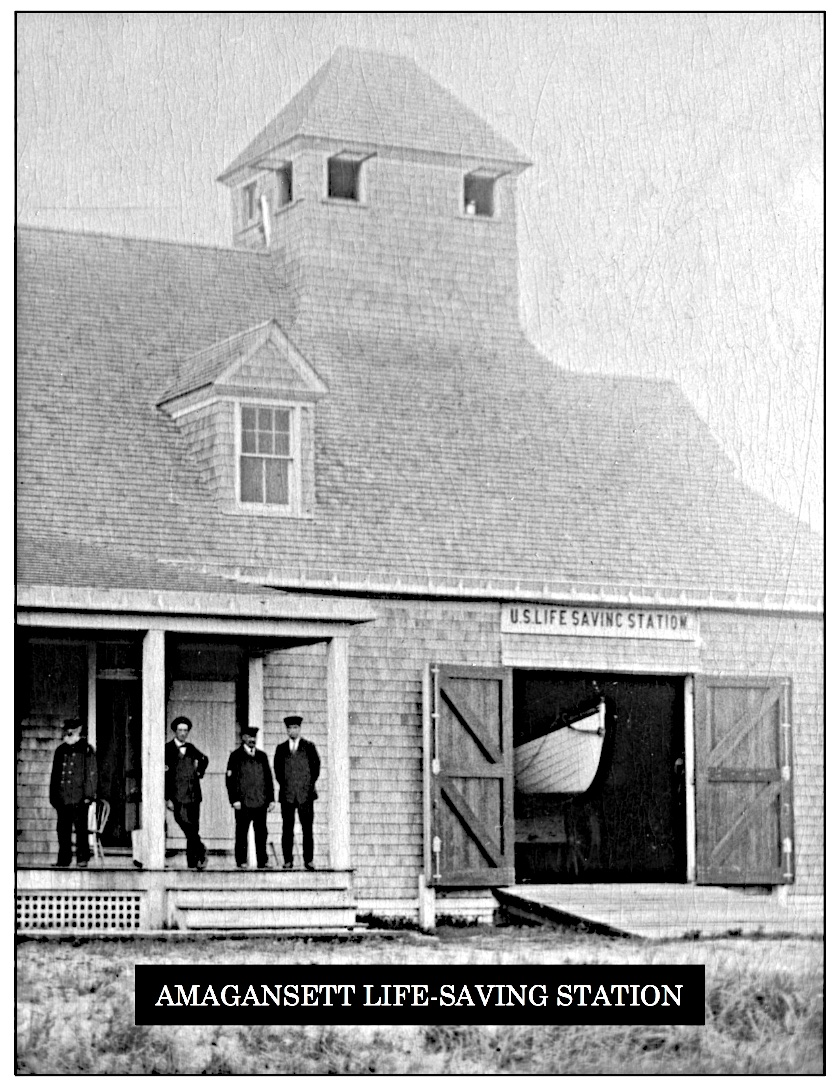
AMAGANSETT LIFE-SAVING STATION
HISTORIC STRUCTURE REPORT
~~~~~~~~~~~~~~~~~~~~~~~~~~~~~
Prepared for:
The Amagansett Life-Saving and Coast Guard Building Community Center Committee
Prepared by: Robert Hefner
December, 2011
Abridged edition, with supplemental images.
When the Amagansett Station was constructed on Atlantic Avenue in 1902, it was one of a network thirty life-saving stations on the south shore of Long Island. Through each night and in bad weather the men at these stations kept watch from the lookout tower and by patrolling the beach. Discovering a ship in distress, the life-savers would perform a rescue by launching their surfboat or by firing a line to the ship and taking people off with a breeches buoy. From 1902 to 1937 the crew of the Amagansett Life-Saving Station, most of whom were experienced local fishermen and shore whalers, kept watch over this beach and rescued sailors and passengers from a number of shipwrecks. The Life-Saving Service and the Lighthouse Service were the two federal programs intended to increase the safety of coastal navigation. These two services were later joined in the U. S. Coast Guard. The Amagansett Life-Saving Station complements the Montauk Point Lighthouse in recalling that era of our maritime history when ships sailing the ocean provided the principal means of transporting goods and people in coastal America….
~~~~~~~~~~~~~~~~~~~~~~~~~~~~~~~~~~~~
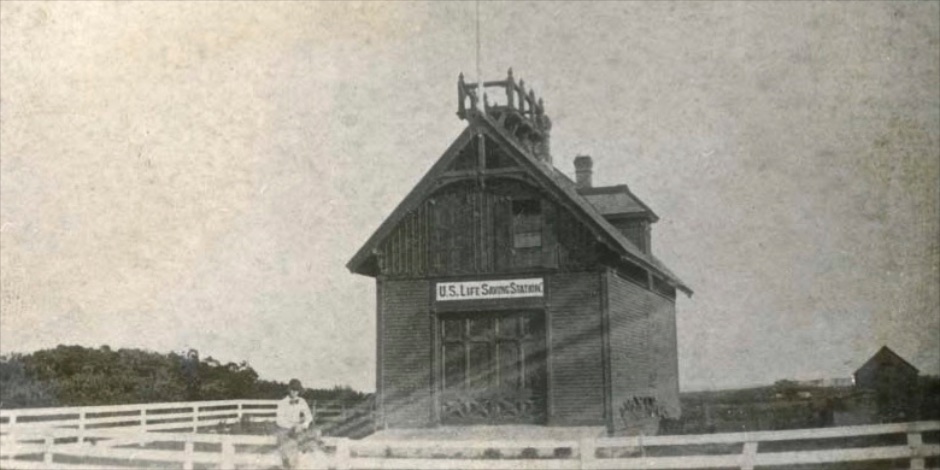 The 1880 Amagansett Life-Saving Station. Courtesy of the East Hampton Historical Society.
The 1880 Amagansett Life-Saving Station. Courtesy of the East Hampton Historical Society.
THE 1849 AND 1880 AMAGANSETT LIFE-SAVING STATIONS
The federal life-saving service began modestly in 1848 when Congress funded construction of eight lifeboat houses on the New Jersey coast and equipped them with surfboats and other apparatus. In 1849 sixteen new lifeboat houses were built on the shores of New Jersey and Long Island, including one at Amagansett. These first twenty-four stations lined the Atlantic approaches to New York, America’s preeminent seaport at that time.
These early stations were nothing more than small boathouses sheltering a surfboat and other apparatus. The stations were not manned, relying on volunteers to use the equipment….
What had been a haphazard system became the professional United States Life-Saving Service by act of Congress in 1878. The legislation provided funds for many new stations and mandated that all life-saving stations have a resident keeper and crew. One of the many stations built soon after establishment of the U.S. Life-Saving Service was a new Amagansett Station, completed in 1880. The Amagansett Station was one of twenty-six built to the same 1876-Type design from 1878 to 1880.2 The 1880 station stood on the north side of Bluff Road, a short distance east from Indian Wells Plain Highway….
By 1899 the U. S. Life-Saving Service had decided to replace the 1880 station with a new station to be built much closer to the beach on Atlantic Avenue. Negotiations to purchase the eight-acre site on Atlantic Avenue began in 1899….
———————————-
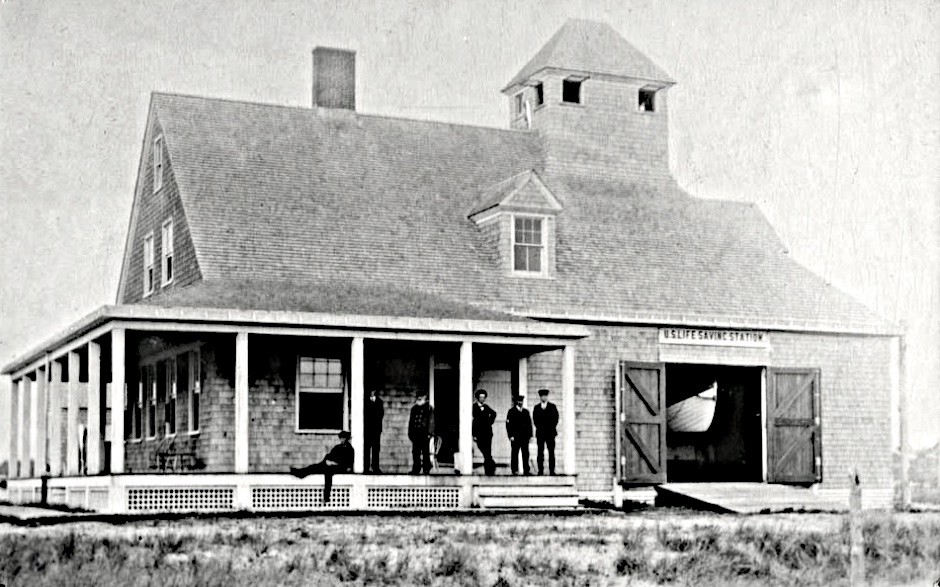 This photograph was taken shortly after the Life-Saving Station was built. The surfboat on its wagon is visible in the east boat-room doorway. Courtesy of the East Hampton Historical Society.
This photograph was taken shortly after the Life-Saving Station was built. The surfboat on its wagon is visible in the east boat-room doorway. Courtesy of the East Hampton Historical Society.
CONSTRUCTION OF THE 1902 AMAGANSETT LIFE-SAVING STATION
The Life-Saving Service selected the 1900 Quonochontaug Pattern for the new Amagansett station. The original design of this type was drawn by George R. Tolman, the Life-Saving Service architect from 1892 to 1896, for a station built at Quonochontaug, Rhode Island in 1892. This proved to be a popular design with twenty-one built to 1908….Tolman’s Quonochontaug station represented an artistic evolution in organizing the boat room and the living quarters under one broad hip roof that also flowed over the wrap-around porch integrating all the elements into one graceful utilitarian design. The Quonochontaug type station also represented a practical evolution in being the first station with three separate equipment bays, each with its own doorway.
The design of Tolman’s 1892 Quonochontaug type station was modified in 1900 by Victor Mendleheff, the Life-Saving Service architect who succeeded him. Mendleheff’s package of twelve drawings, entitled “Quonochontaug Pattern, 1900,” and an accompanying twenty-four-page specifications were used for construction of the 1902 Amagansett Life-Saving Station….
The crew of the Amagansett Life-Saving Station kept watch over their stretch of beach through the night and during the day in foggy or stormy weather. The Amagansett surfmen were responsible for the stretch of beach 2 1⁄2 miles to the east (halfway to the Napeague Station) and 2 1⁄2 miles to the west (halfway to the Georgica Station). The crew immediately went to the aid of a stranded vessel taking their surfboat and other rescue apparatus. Rescues were often performed with the aid of crews from the Napeague or Georgica stations. During the days of good weather the crew conducted drills to sharpen their skills. These included a fire drill once a week, a boat drill twice a week, a drill using signal flags five times a week, a resuscitation drill once a week and a breeches buoy drill once a week….
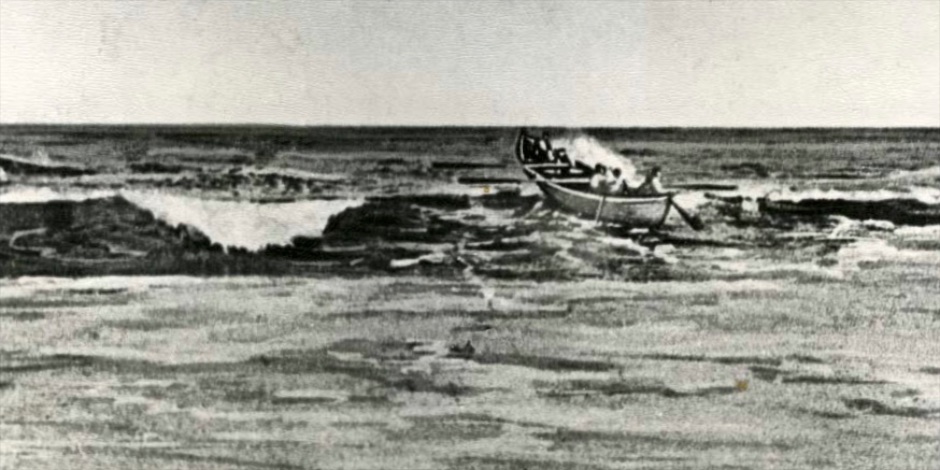 Archival postcard view of a launch in the surf at Amagansett. Courtesy of the East Hampton Historical Society.
Archival postcard view of a launch in the surf at Amagansett. Courtesy of the East Hampton Historical Society.
The surfboat
The Amagansett Life-Saving Station was equipped with two Beebe open surfboats.14 Designed by Frederick Beebe and built in his shop in Greenport, These double-ended surfboats had an overall length of 27’-4” and a beam of 7’. They were clinker built with white cedar planks over white oak frames. The surfboats had five thwarts for up to ten oarsmen….
The breeches buoy
If conditions prevented launching the surfboat, the life-savers attempted to take the crew and passengers from a ship using the breeches buoy. The crew fired a projectile with a line attached out to the ship. The ship’s crew then used the shot line to haul out a heavy hawser which they fastened at the top of the lower mast. The crew was brought ashore one at a time with the breeches buoy, a cork life ring with a pair of canvas shorts sewn into it, which would travel back and forth on the hawser….
~~~~~~~~~~~~~~~~~~~~~~~~~~~~~~~~~~~~
RESTORATION, PHASE ONE (2011 Proposal)
The highest priorities are to restore the windows, the entrance doors, the boat-room doors, the porch and the varnished interior of the boat room.
Windows
Restoring the fenestration of the Amagansett Life-Saving Station would include the following steps:
- Removing the five1942 windows of the boatroom.
- Installing replicas of the original sash in the eighteen intact 1902 window frames.
- Installing five replicated1902 windows, complete with frames, sash and exterior casings, to restore original windows that are now missing. The location of these five missing windows is documented by the 1900 plans and by evidence of the original rough openings within the wall frame.
Restoring the original exterior doors of the Amagansett Life-Saving Station would include the following steps.
- The five pair of 1966 glazed doors would be removed.
- Replicas of the two original entrances to the dwelling would be installed. The work would include removing the 1966 doorways in these locations and removing exterior and interior finishes covering the frame to expose the rough openings for the larger 1902 doorways. An authentic restoration of these doorways is documented by the 1900 plans and specifications, historic photographs, and by the intact 1902 interior doorways with transom sash.
- Replicas of the three boat room doors, along with their trim, shingled hoods and timber door stops, would be installed. The 1900 Quonochontaug Pattern station specifications and drawings and historic photographs provide the documentation for an accurate reconstruction of the boat room doors. The extant rough openings document their locations. Four 1902 door hinges, which had been recycled in 1942 to the 1930s garage and in 1966 to a shed, are now stored in the station. These can be used as patterns for new hinges.
Porch
Reconstructing the original porch is the third major element of an exterior restoration. The 1902 porch is well documented by the1900 specifications and drawings which include sections detailing the porch construction, boxing of the posts and lintels, and construction of the screens set beneath the porch floor. The porch is also well documented by historic photographs and by the intact rafters and lintel timbers of the south porch roof.
Boat room interior
The boat room, where the surfboats and beach cart were stored, is the primary character-defining space of the Amagansett Life-Saving Station. This is also the room that would be most accessible to the public. The varnished long-leaf yellow pine paneling may have been first painted after July, 1942, when it became a dormitory. In 2008 the paint was removed from an area of ceiling paneling and from two interior columns with excellent results. Removing the paint and restoring the varnished finish to the pine interior would return the boat room to its historic appearance.
————————————
RESTORATION, PHASE TWO (2011 Proposal)
A second phase would be restoring the interior beyond the boat room. Rooms restored to their historic appearance would be adaptable to different uses. It is presumed that a bathroom would remain in the pantry (room 104) and that the 1934 cellar stairway would be retained. The following steps and considerations are pertinent to this work.
- The first step would be to remove and save for reuse all recycled 1902 door and window casings, wainscoting and any other original components reused at other locations in 1966.
- Secondly, all 1966 fabric would be removed from the interior.
- This would be followed by an examination of historic fabric revealed after the 1966 paneling, gypsum board and other material is removed. Exposed original plaster and woodwork would document the interior paint history. Wall framing would document the location of original doorways.
- The1966 chimney should be taken down.The large chimney stack makes it impossible to restore either the mess room, kitchen or keeper’s room to their original configuration. A chimney stack could be rebuilt to the 1902 dimensions and at the original location. A new chimney could be of concrete block to the ridge. Not rebuilding the chimney is also an option to be considered, as the masonry is not exposed within the rooms.
- An interior restoration would include restoring plaster walls and ceilings and woodwork such as baseboards, chair rails, wainscoting, paneling, the typical cornice treatment and mantel shelves.
- Efforts to remove paint from the woodwork to restore the varnished finish should be concentrated in the boat room. The second highest priority for restoring a varnished finish would be the paneled watch room and the third priority would be the halls and stairway leading up to the watch room. Leaving the woodwork painted within the other rooms may be the practical alternative.
SITE RESTORATION
At completion of construction work, the site should be restored to a dune-land setting as depicted in historic photographs of the Amagansett Life-Saving Station.
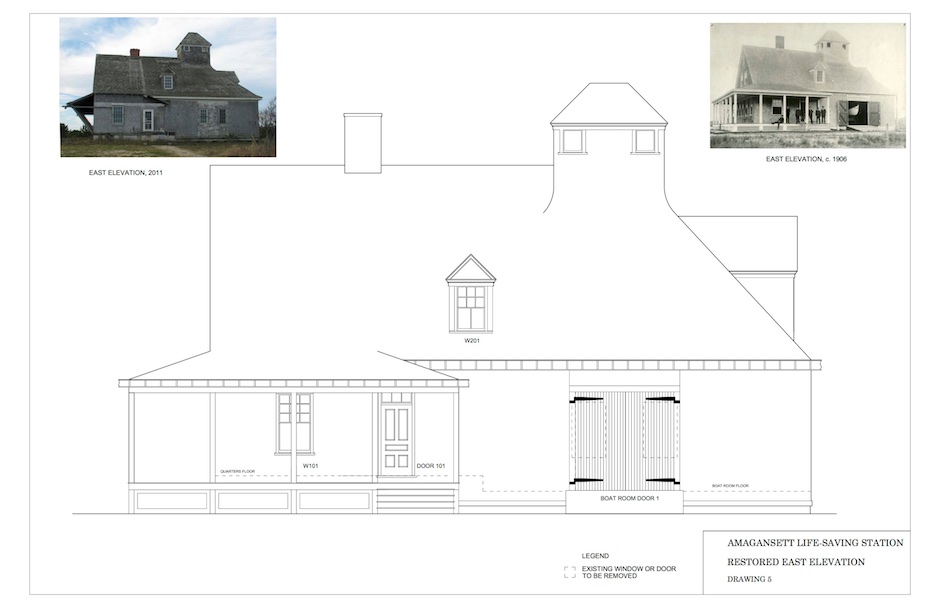
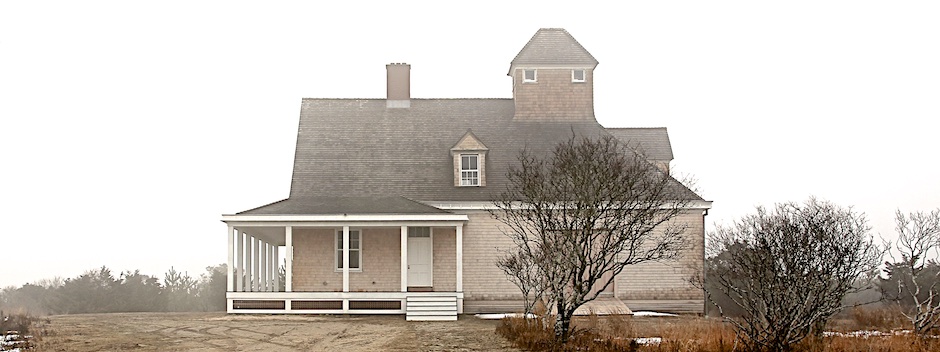

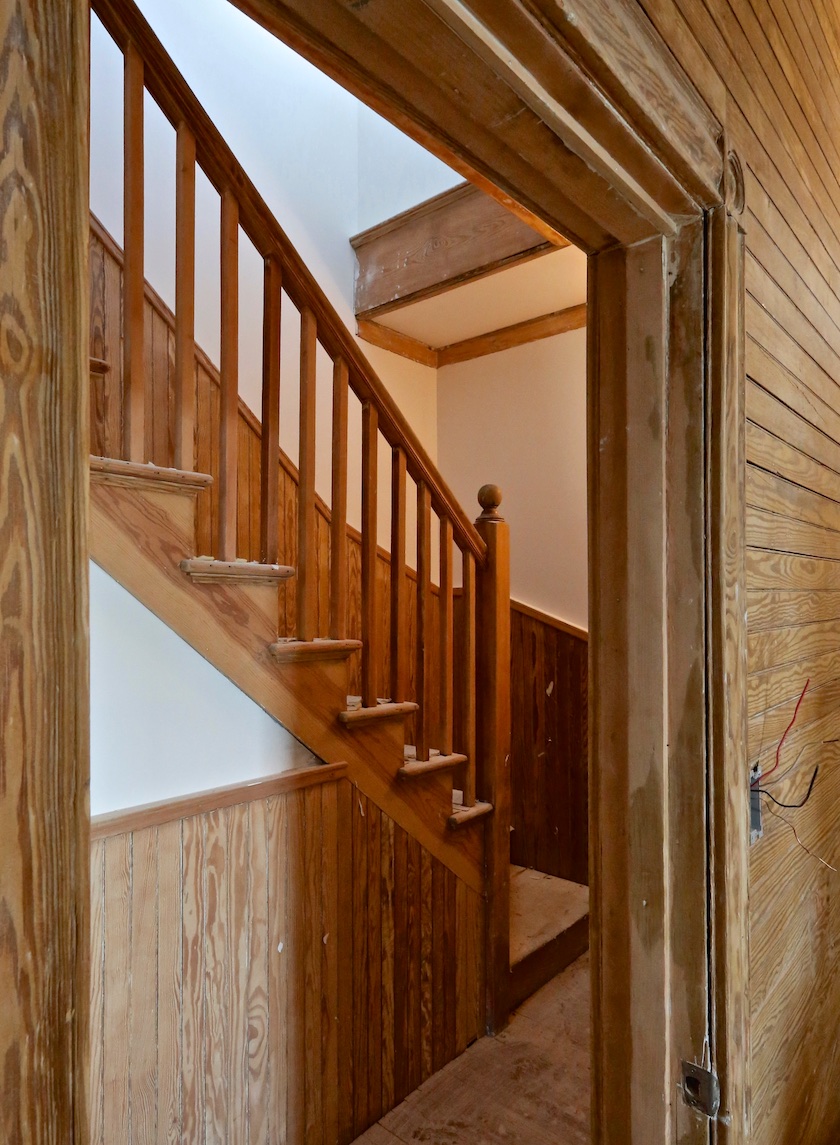
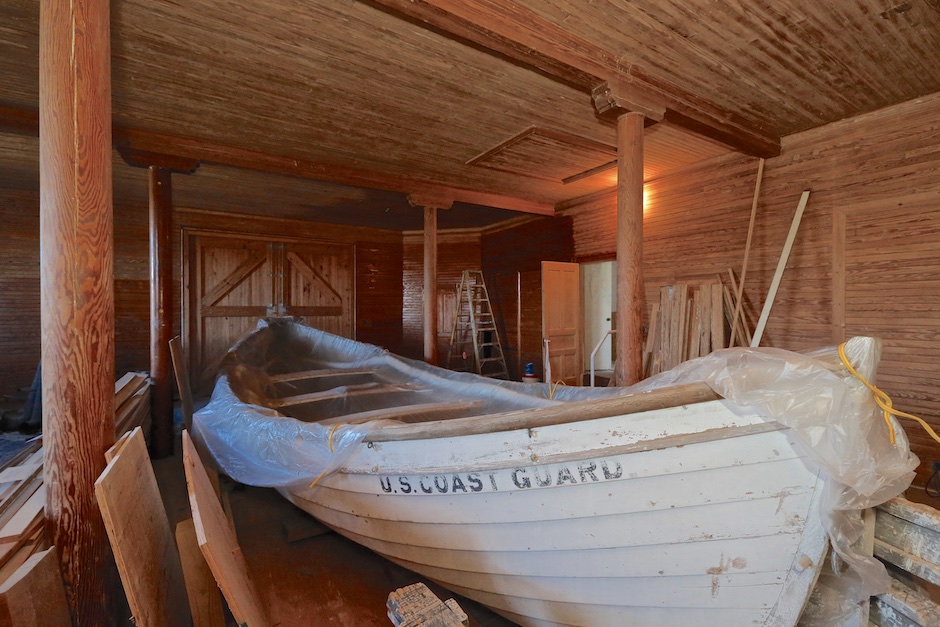
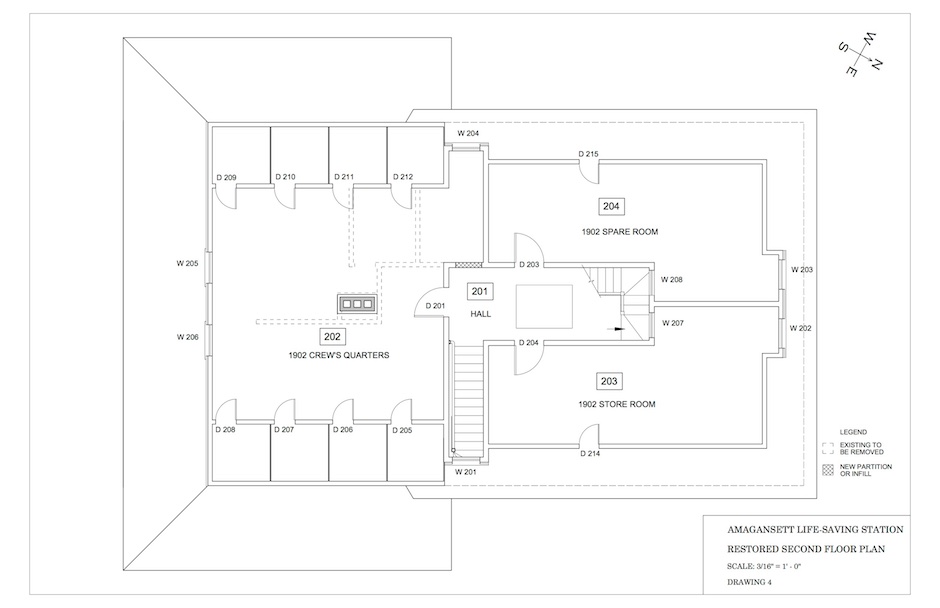

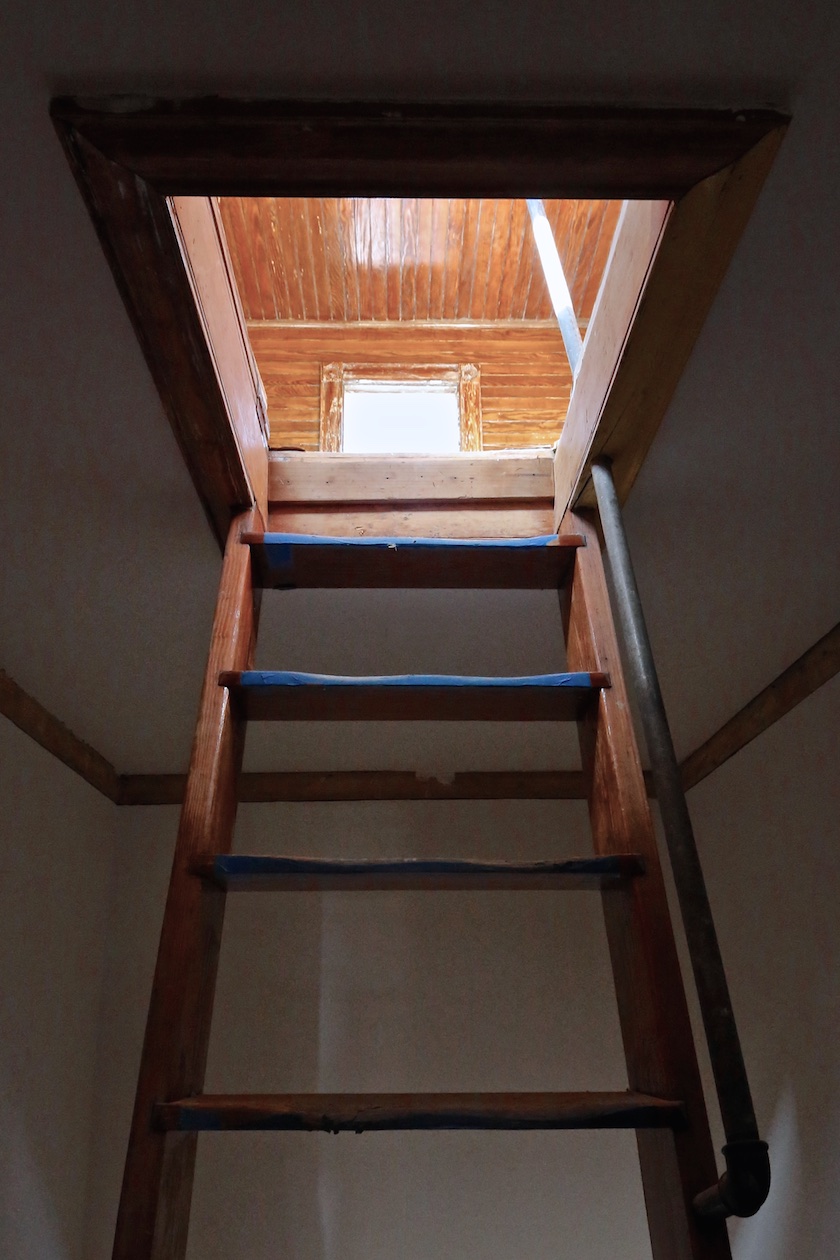
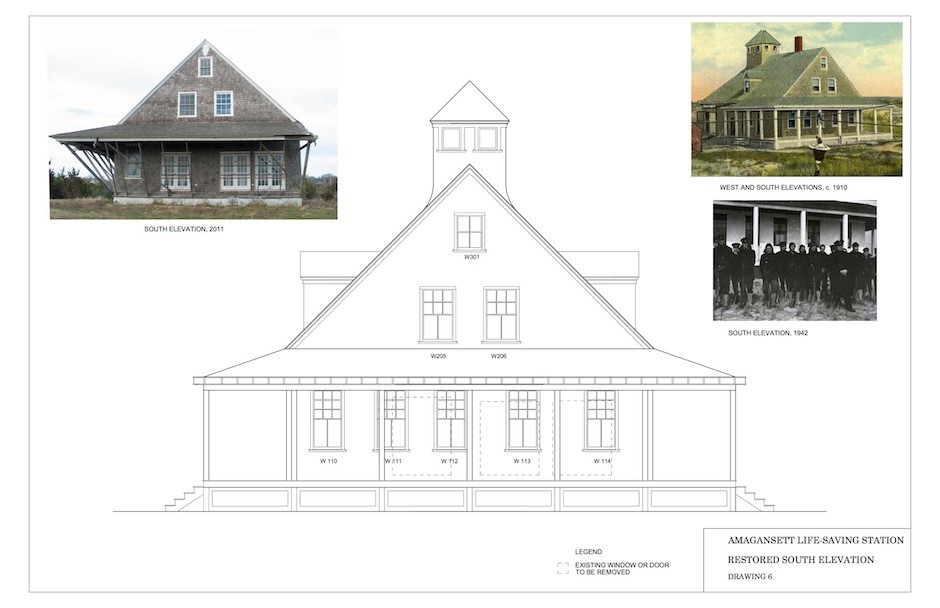
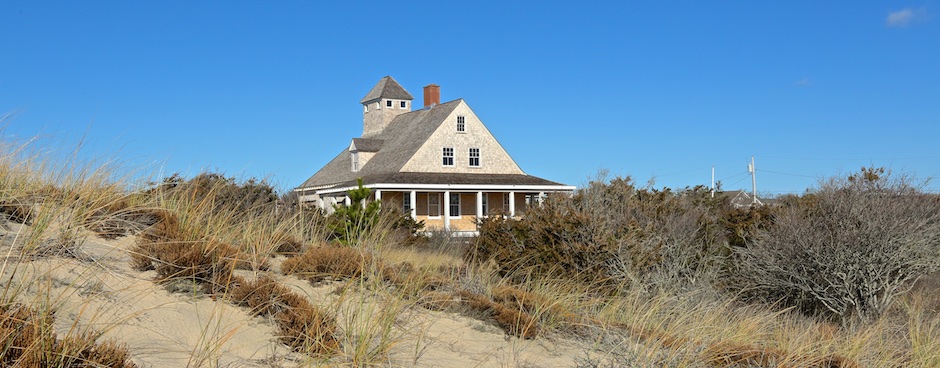
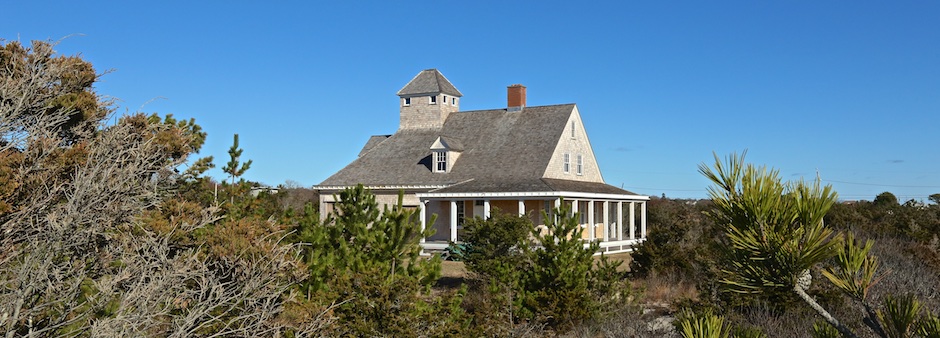
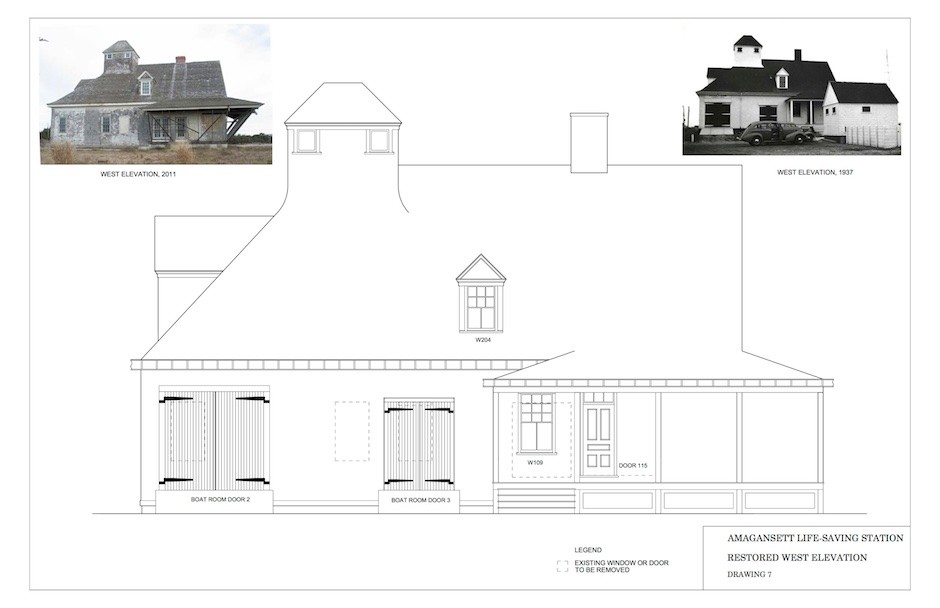
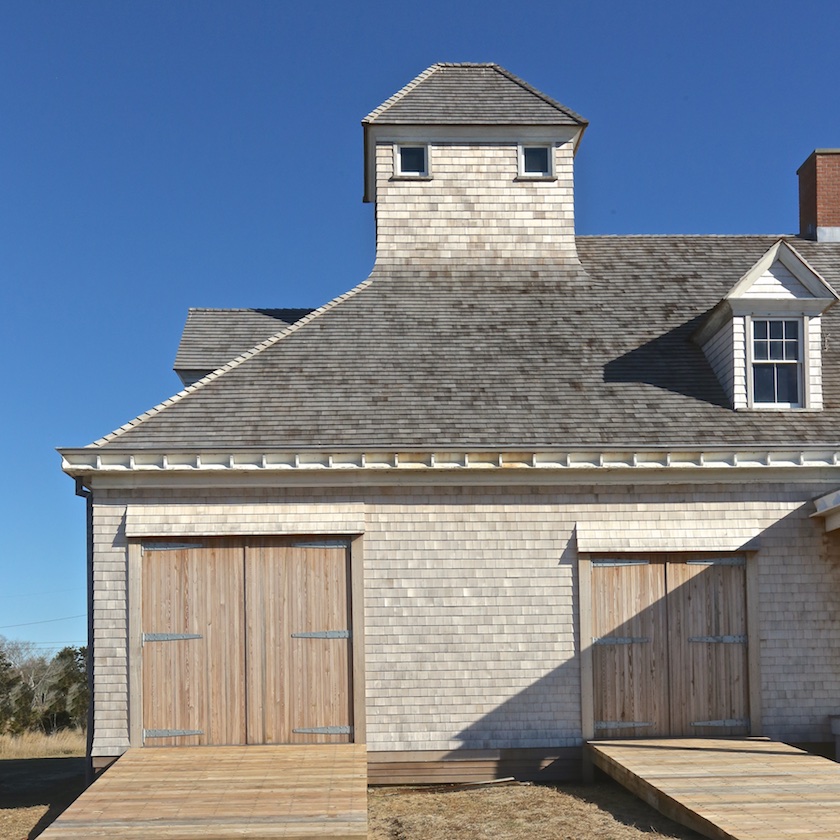



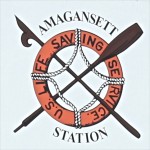
~~~~~~~~~~~~~~~~~~~~~~~~~~~~~~~~~~
Abridged Amagansett Life-Saving Station Historic Structure Report, with supplemental images. Original report courtesy of Robert Hefner.
